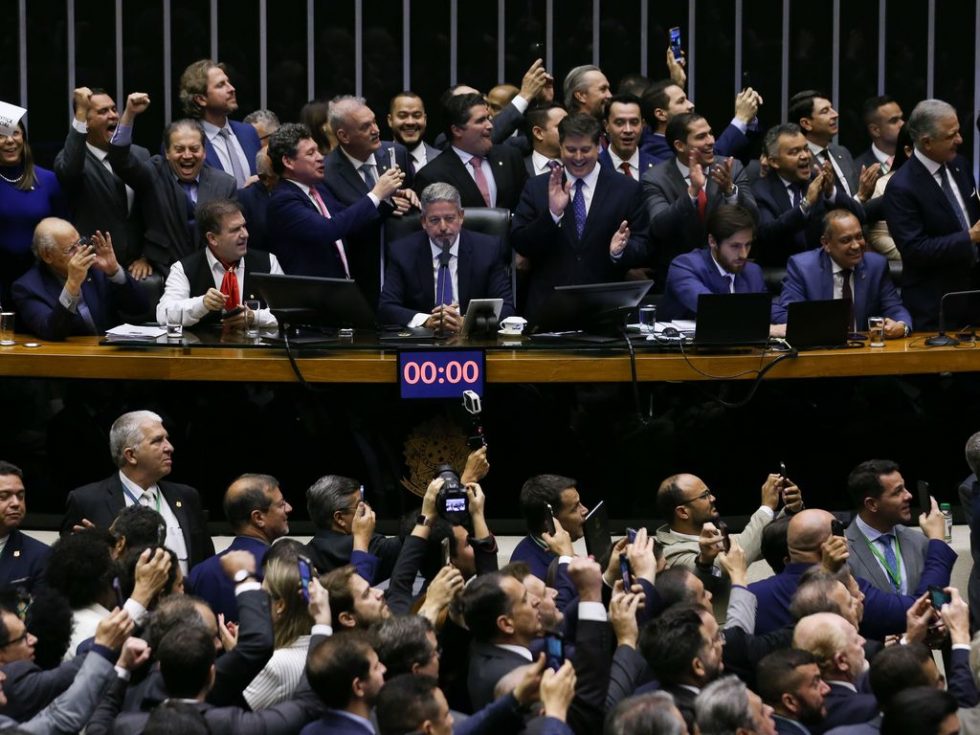
After more than 30 years of numerous discussions, the tax reform was approved in its first round of votes, with a total of 375 votes in favor, 113 against and three abstentions in the Chamber of Deputies, in the early hours of the 7th of July.
Created in 1966, the Brazilian tax system underwent minor changes over the decades and operated essentially with its original format. But, since then, the country’s economy has evolved and several different governments have brought to the table discussions about changing the tax collection model in Brazil.
What changes now?
With the approval of the Chamber of Deputies, the Proposed Amendment to the Constitution (known as PEC) will now be analyzed by the Federal Senate. The expectation is that the implementation of the changes will begin in three years and will be completed by 2033. TINO Econômico highlights the main changes below:
1. Tax unification
If there is something that sounds familiar to Brazilians, it is taxes. Today there are almost one hundred types of taxes levied to keep the country going.
With the reform, some of them will cease to exist and will be unified into two Value Added Taxes (IVAs in Portuguese).
– Federal taxes, such as Tax on Industrialized Products (known as IPI), and PIS and Cofins charged to finance the payment of pensions and benefits will be extinguished and included in the Contribution on Goods and Services (known as CBS).
– The same will happen with the Tax on Circulation of Goods and Services (known as ICMS), which is a state tax and the Tax on Service (known as ISS), which is municipal, which will cease to exist for the implementation of the Tax on Goods and Services (abbreviated to IBS).
In addition to these taxes, a new tax, the Selective Tax, will be created for items which are harmful to one’s health and the environment, such as cigarettes and alcoholic beverages.
2. End of cascading tax
In the current tax system, a company pays about five taxes at each stage of the production process, and thus they accumulate.
The reform proposes that as from its implementation, only the two Value Added Taxes (IVAs) are charged at each stage of the production process and that, in the end, the amounts paid in the previous stages are deducted, putting an end to the tax on tax.
3. New rates
Currently, each product has a different tax rate, that is, it pays a different percentage of tax, even if they are similar items, such as perfume and cologne.
With the reform, most products will pay a single rate, with the following exceptions:
Goods and services related to security, education, health and transport will have a tax rate which is 60% lower. This will also be the case with medicines, accessibility items for people with disabilities, artistic, cultural, journalistic and sports activities and agricultural products and inputs.
The items of the national basic basket, which will still be created, will have a zero tax rate. The products that will be a part of the basket have not yet been defined.
On the other hand, products considered harmful will pay a percentage of taxes above the average, also not yet defined.
4. Cashback
With the aim of reducing income inequality in the country, the tax reform introduces the cashback concept, which provides that taxes paid by the low-income population are returned to them.
Although the proposal is presented in the text of the tax reform, its format will be defined in a supplementary law.
5. Taxes for the richest part of the population
The approved proposal also provides for the obligation of proportional charges for inheritance, that is, the greater the amount received, the greater the percentage to be paid. In addition, the IPVA charge, which is already levied on cars, will be extended to private jets and speedboats, or any other air and water vehicle.
6, 7, 8, 9… and many more
The tax reform also proposes:
– The creation of a federative council with representatives from all Brazilian states.
– The installation of a National Fund for Regional Development, to reduce local inequalities in each region.
– The creation of a compensation fund aimed exclusively at the Amazon.
– That the new taxes be levied where the products are consumed, and no longer where they are produced.
– The prohibition of tax collection for religious entities and temples.
Sources: Estadão, G1 and Folha de S.Paulo.








